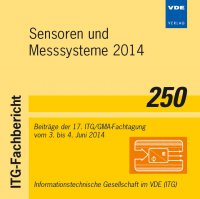Non-invasive Ultrasound Based Reflection Measurements at Polymer Plastication Units: Measurement of Melt Temperature, Melting Behaviour and Screw Wear
Konferenz: Sensoren und Messsysteme 2014 - Beiträge der 17. ITG/GMA-Fachtagung
03.06.2014 - 04.06.2014 in Nürnberg, Deutschland
Tagungsband: Sensoren und Messsysteme 2014
Seiten: 6Sprache: EnglischTyp: PDF
Persönliche VDE-Mitglieder erhalten auf diesen Artikel 10% Rabatt
Autoren:
Praher, Bernhard; Straka, Klaus; Steinbichler, Georg (Johannes Kepler University Linz, Institute of Polymer Injection Moulding and Process Automation, Linz, Austria)
Inhalt:
Previous attempts to accurately measure the real polymer melt temperature, the melting behaviour and the wear along the plastication screw of an injection moulding machine have failed on account of challenging metrological boundary conditions (high pressure, high temperature, rotating and axial moved screw). We developed a novel ultrasound system – based on reflection measurements – for the online determination of these important process parameters. Using available pressure-volume-temperature (pvT) data from a polymer it is possible to estimate the density and adiabatic compressibility of the material and therefore the pressure and temperature depending longitudinal ultrasound velocity. From the measured ultrasonic reflection time from the screw root and the pressure it is possible to calculate the mean temperature in the screw channel (in opposition to flush mounted infrared or thermocouple probes). Furthermore, the absence of the signal from the screw root indicates (due to the scattering of sound energy) unmelted material in the screw channel. This information can be used for the estimation of the melting behaviour along the screw. Monitoring the signal from the screw flight it is possible to detect wear effects due to adhesive, abrasive and corrosive processes. Both the melting behaviour and wear effects at the screw flights are commonly determined by pulling the screw out of the barrel in a time-consuming and cost-intensive process. The proposed online system can significantly reduce the inspection time from hours (or days) to minutes.


